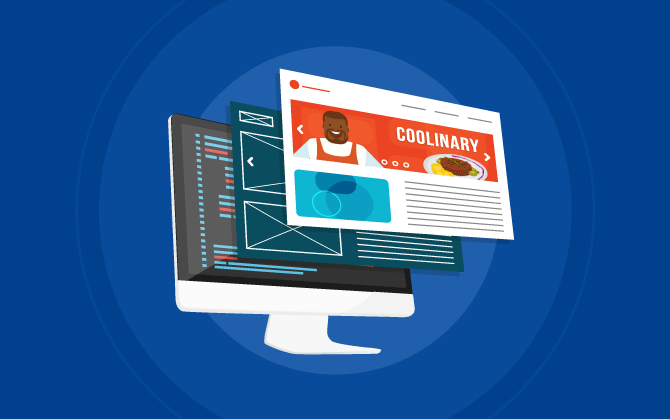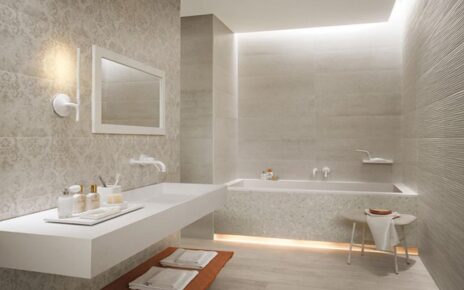Today web design may seem strange, but the first sites consisted entirely of text – the modern concept of visual content on the Internet simply did not exist. For the first time, images and text “met” back in 1993 – and no longer separated. From this date, the history of web design is counted. We invite you to dive into the exciting story of the growth and maturation of this type of design – perhaps the most important one today – through the translation of infographics from Spark Pay.
Table of Contents
16 deadly landing page web design mistakes
1990-1994
So, the following innovations became the main design trends of the period 1990-1994:
- The appearance of the first monitors with a resolution: 640×480 with support for 16 colors. Yes, we were not mistaken – only 16 colors!
- Text-packed sites: Early browsers only supported text. This was until 1993, when support for viewing images was introduced.
1990: WorldWideWebe (Nexus) is the first web browser.
1990: HTML is born! It is a code language for reading by browsers and layout of web pages.
1991: The first website is launched.
1993: Mosaic is the first browser to support viewing images in conjunction with text, as well as the first tool to download web pages in our usual format.
1993 – the emergence of the Yahoo portal.
1994: Netscape Navigator – Supports on-the-fly page loading. The browser was so powerful for its time that many developers posted a recommendation on their sites “Better browsing through Netscape”
1994: The World Wide Web Consortium (W3C) is established. A number of basic principles and components are formulated that make the Web available to everyone, always.
- Information Gap and Intuitive Web Design

1994-1998
The next era (1994-1998) was associated with a technological explosion that brought exciting new opportunities to web design. However, the era of new liberalism in site building was not only about positive aspects – it was painful for a modern user to look at many of the design decisions of that time.
Design trends of the period
- Overall screen resolution: 800x600x256 colors;
- Color support increased to 256;
- Bright, eerie colors – people with a weak psyche are not recommended to look at this 🙂
- Flashy Ads – Once the internet began to gain traction, businesses turned to it as a marketing tool. Sites tried to attract the reader mainly with bright and tasteless advertisements reminiscent of modern banners.
- Font support – simple serif fonts such as Times New Roman and Courier New are gaining ground
- Colored buttons with simulation of 3D effect
Browsers
1994: Opera Browser 1.0 – launched as a research project.
1995: Internet Explorer 1 and 2.
1996: Netscape Navigator 3. In 1996, nearly 90% of Internet users were using Netscape Navigator as their browser.
1996: Internet Explorer 3. IE3 supports multimedia, Java applets, ActiveX controls, and add-ons such as Internet mail. All of this neutralized Netscape’s dominance in the marketplace, making IE3 the most popular browser for years to come.
Events

1995:
PHP (Personal Home Page) released. New, simple and dynamic applications are being created such as guest books and various web forms.
The new programming language “Ruby” appears.
Macromedia Shockwave creates animation and interactive applications for web development. Later, the entire company is bought by Adobe.
Javascript appears as part of Natscape Navigator 2.0B3
1996:
BBC website launch (1996)
The release of CSS (Cascading Style Sheets) brings new possibilities for web developers. Already 1% of the world’s population has access to the Internet.
Active Server Pages (ASP) is based on the Windows NT 4.0 Option Pack
Flash multimedia and software platform launched. It opens up new possibilities for the development of vector graphics, animated games and applications.
1997:
The introduction of HTML 4.0 made the Internet truly international by establishing a universal character set to support users around the world. 100 million users are now online.
1998-2002
Since the types and volumes of content on the Internet only grew, there was a need for competent cataloging, increasing the availability of resources and optimizing usability in general. The main trend has become the growing emphasis on menu and navigation elements. The web design has become a little more sophisticated, but the dependence on angular solutions and primary colors is still visible.
800×600 monitor resolution still dominates, preferred by 56% of users. However, 25% went to 1024×768, especially by 2000.
Design trends of the period:
- A growing emphasis on menus and navigation;
- More concise and rational arrangement of content – less text on one screen, more mini-pages;
- Dark or solid-colored page backgrounds are very popular;
- Using gradients.
Events

1998 – Google launched. In the years to come, this corporation will reimagine online search and launch successful services in a variety of Internet industries.
CSS2 was also released in 1998.
1999 – Internet Explorer 5.0
2001 – Internet Explorer 6
2002-2006
Further innovations have given designers unprecedented opportunities to integrate animated content into websites. Splash screens and flash pages are already in vogue, but more and more emphasis is placed on reliability and functionality. Increasing the average connection speed opens up opportunities for design improvements. It also leads to the emergence of video content to the fore – as a result, in 2005, YouTube appears.
A year before, the future social media giant Facebook entered the market (2004).
Between 2002 and 2006, millions of users switched from 800×600 to 1024×768 or higher. The 640×480 format finally lost ground and disappeared in 2005.
In 2003, more than half of Internet users were using 4- or 32-bit hardware, displaying 16,777,216 different colors.
Design trends of the period
- Flash animation on pages.
- Emphasis on readability and functionality.
- Animated content is subtly integrated into resources.
Browsers
In 2004, open source Firefox 1.0 competed with the ubiquitous Internet Explorer, the most popular browser at the time.
2003: WordPress, an open source blogging and content management system, was launched.Launch of social platforms MySpace and Facebook.
2005: YouTube video streaming service launched. It was subsequently purchased by Google in 2006.
2006-2010
For most of the next period, squamorphism was fixed in fashion – a trend in which textures similar to web design real materials (wood, fabric, etc.) are used in design. Video content continues to take over the internet.
By January 2010, over 75% of users had switched to formats higher than 1024×768.
Design trends of the period
- Long layouts.
- Stock photos.
- Squemorphism.
Browsers
2008: Google Chrome appears and is an instant success. It is rapidly gaining the title of the most popular browser on the planet for its minimalism, speed and trendy design.
2007: The first iPhone arrives, launching a revolution in the way we think about smartphones. Responsive design is becoming more and more relevant.
2008: First working version of HTML5.
2010-2014
The most significant changes during this period are around the shift towards flat layouts – a minimalist approach with simple elements, typography and flat colors. The incredible growth rate of the mobile audience makes responsive design a must for online success. Web design have more options and tools than ever before.
Flapp.ca emerged (2014)
1152×854 is becoming the most used resolution.
Design trends of the period
- Flat design.
- Adaptive design.
- Javascript animation.
- Animated GIFs.
- Parallax.
Browsers
2010: The market is mainly controlled by a web design few major players – Chrome, Internet Explorer, Safari, Firefox and Opera.
Between 2010 and 2014, Google presents over 30 different updates for Chrome, Firefox over 20, while IE, Opera and Safari delight fans with releases much less often.
2010: CSS3 release.
2011: There are over 1 billion registered websites on the web. Design freedom is unparalleled.
2013: 51% of US adults use online banking.
2014: The internet turns 25.
Instead of a conclusion
Over the past quarter century, and almost in front of many of us, there have been amazing changes in web design. Of course, there were both successes and failures, but it’s hard to argue – most of the trends and innovations have brought the design into better shape. The Internet today is very different from what it was in 1990, isn’t it?
Since the network was 25 years old, and up to the present, several more trends have changed. Experts talk about the return of flat design in the Flat 2.0 format, contour buttons have been in fashion, and now hero-images, background videos, contrasting colors are widely used. The principles of minimalism are not losing ground, web design is becoming more and more important (and 2016 will probably be held under its flag). Also worth noting is the rejection of many designers from hamburger menus and the rather widespread use of the scrolljacking technique – when the content changes slightly as it scrolls, thereby creating dynamics and even telling a story.




